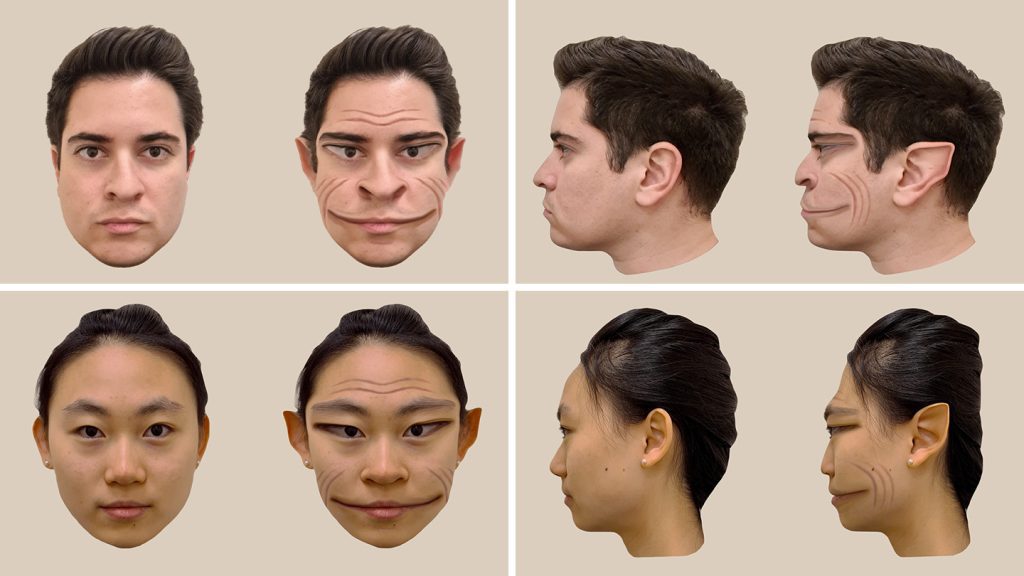Imagine thinking of a person’s face. Now picture that every time you looked at that face, there was a chance it would look twisted. That’s what life is like for someone with prosopometamorphopsia, or PMO. Now, thanks to a recent study, you can see the world from the perspective of someone with this rare condition.
Using input from a 58-year-old man who has had PMO for almost three years, researchers at Dartmouth College changed photos of faces to mimic the unsettling distortions he experienced. This is thought to be the first instance of creating images that replicate what a patient with the condition sees, psychologist Antônio Mello and colleagues report in the March 23 “We hope this has a big impact in the way people think about PMO, especially for them to be able to understand how severe PMO can be,” Mello says. For instance, he says, this particular patient didn’t like to go to the store because fellow shoppers looked like “an army of demons.” Lancet.
PMO is poorly understood, with fewer than 100 cases cited since 1904. Patients report a wide variety of facial distortions. While the patient in this study sees extremely stretched features with deep grooves on the face, others may see distortions that cause features to move position or change size.
Because of that, this visualization is patient-specific and wouldn’t apply for everyone with PMO, says Jason Barton, a neurologist at the University of British Columbia in Vancouver who has worked with the researchers before but was not involved in this study. Still, “I think it’s helpful for people to understand the kinds of distortions people can see.”
Some unusual aspects of this case allowed researchers to accurately depict this patient’s distortions. First, the patient sees them only in faces viewed in person, and not in faces on a screen or on paper. Most people with PMO don’t make that distinction. This patient’s distortions are also always present, rather than only occasionally as in most others with the condition.
By putting a person next to a photo of that person in the same setting, the patient was able to compare a distorted face (the person in the room) with the same non-distorted face (the photo on a computer screen). He described the differences to the researchers, who edited the images in a computer program until the patient confirmed that the altered image matched the in-person face.
Mello hopes that the visualization will educate clinicians about this underdiagnosed condition. Since his team launched
their website a few years ago, they’ve heard from over 70 people who have experienced symptoms of PMO, many of whom have been misdiagnosed. Barton notes that it’s often interpreted as a psychiatric problem — like schizophrenia — rather than a neurological one. When properly diagnosed, neurologists can sometimes treat the condition that is causing the PMO, such as a seizure or stroke. Still, the exact mechanisms behind the distortions remain unknown, and they sometimes affect people with no apparent underlying conditions. Better understanding the mechanisms could help people with PMO, Mello says, as well as provide a better understanding of
how face recognition works in general A patient with a rare form of the disorder assisted scientists in picturing the frightening alterations he experiences when observing human faces. (SN: 1/5/17).



